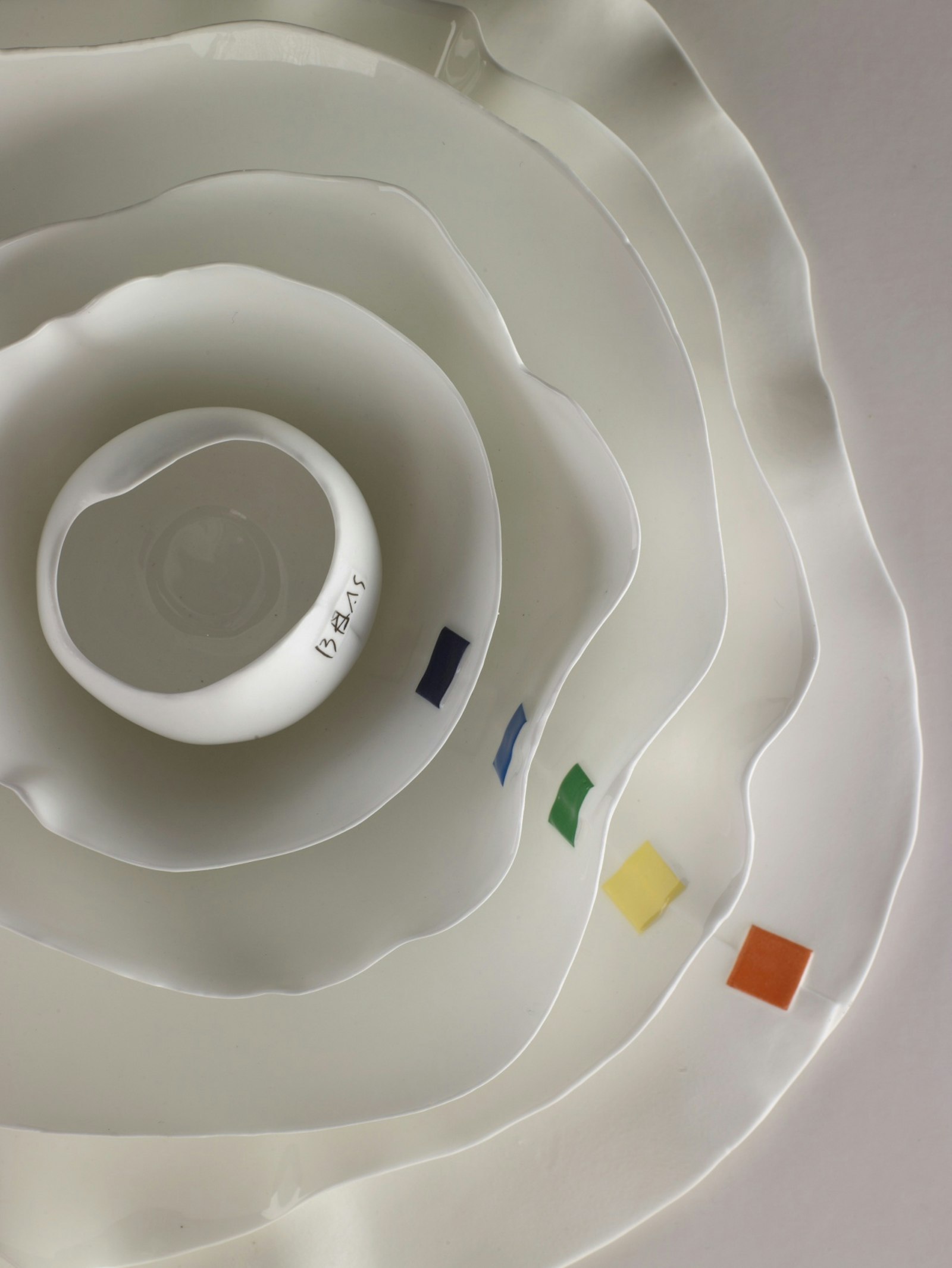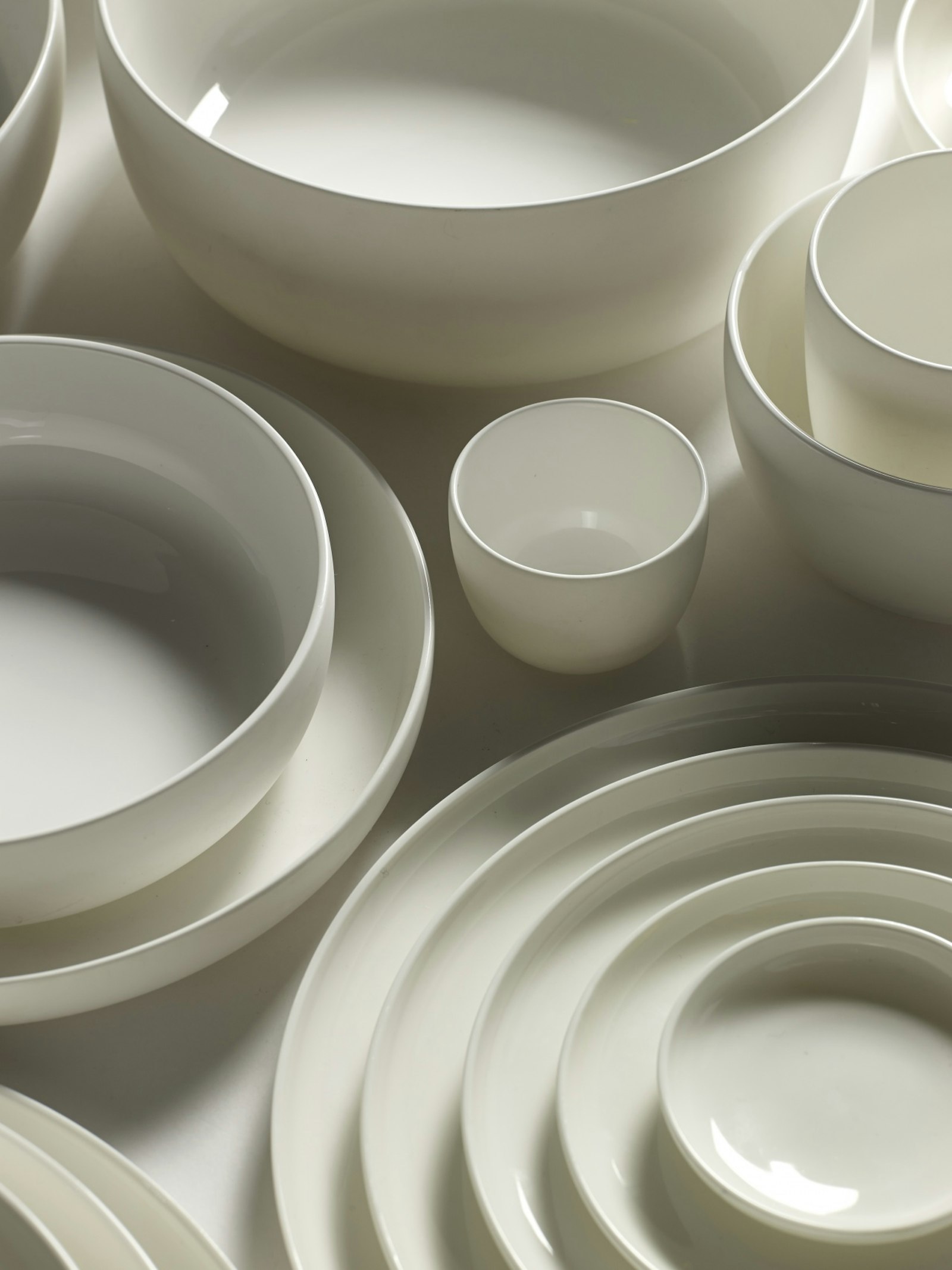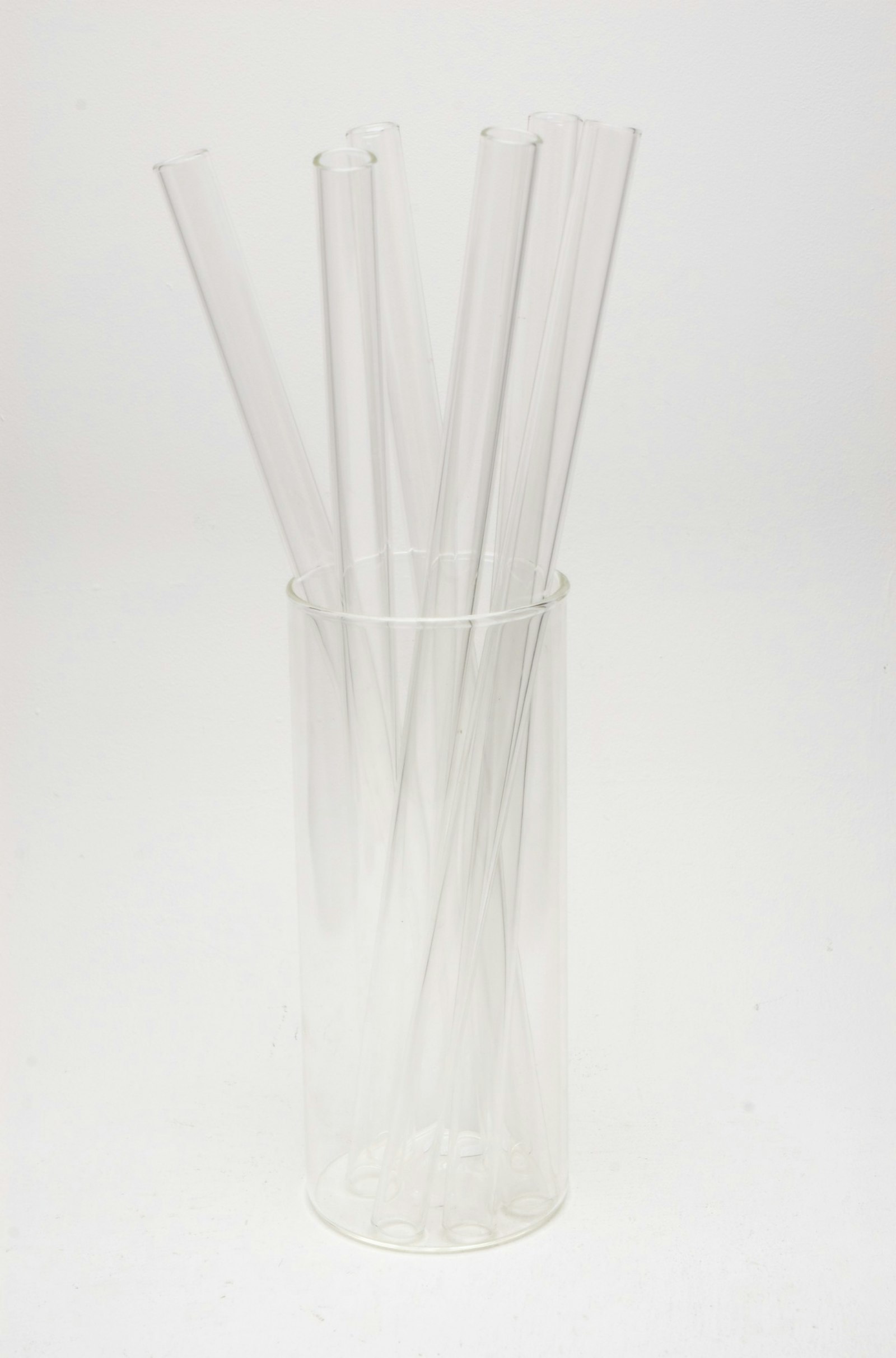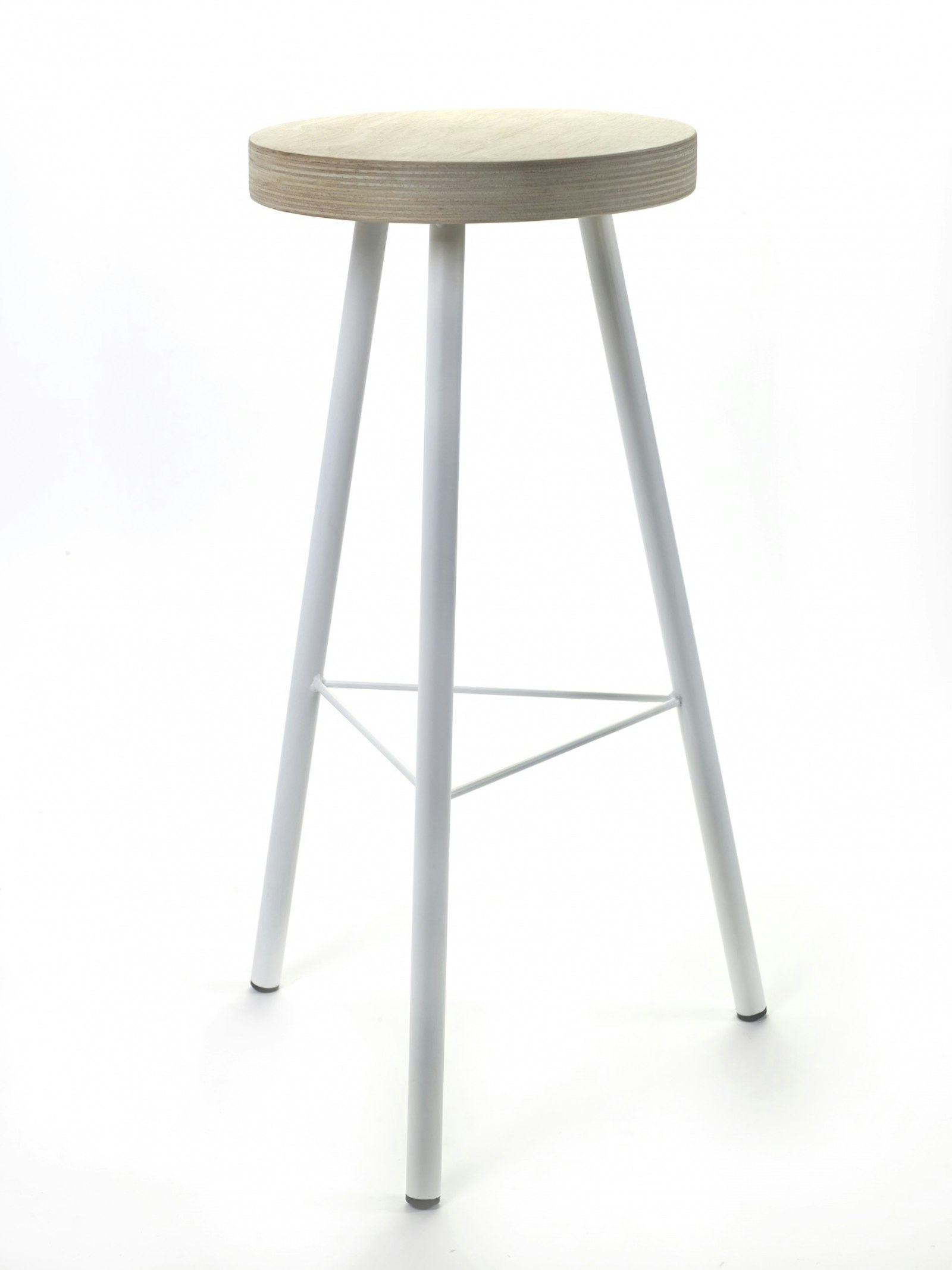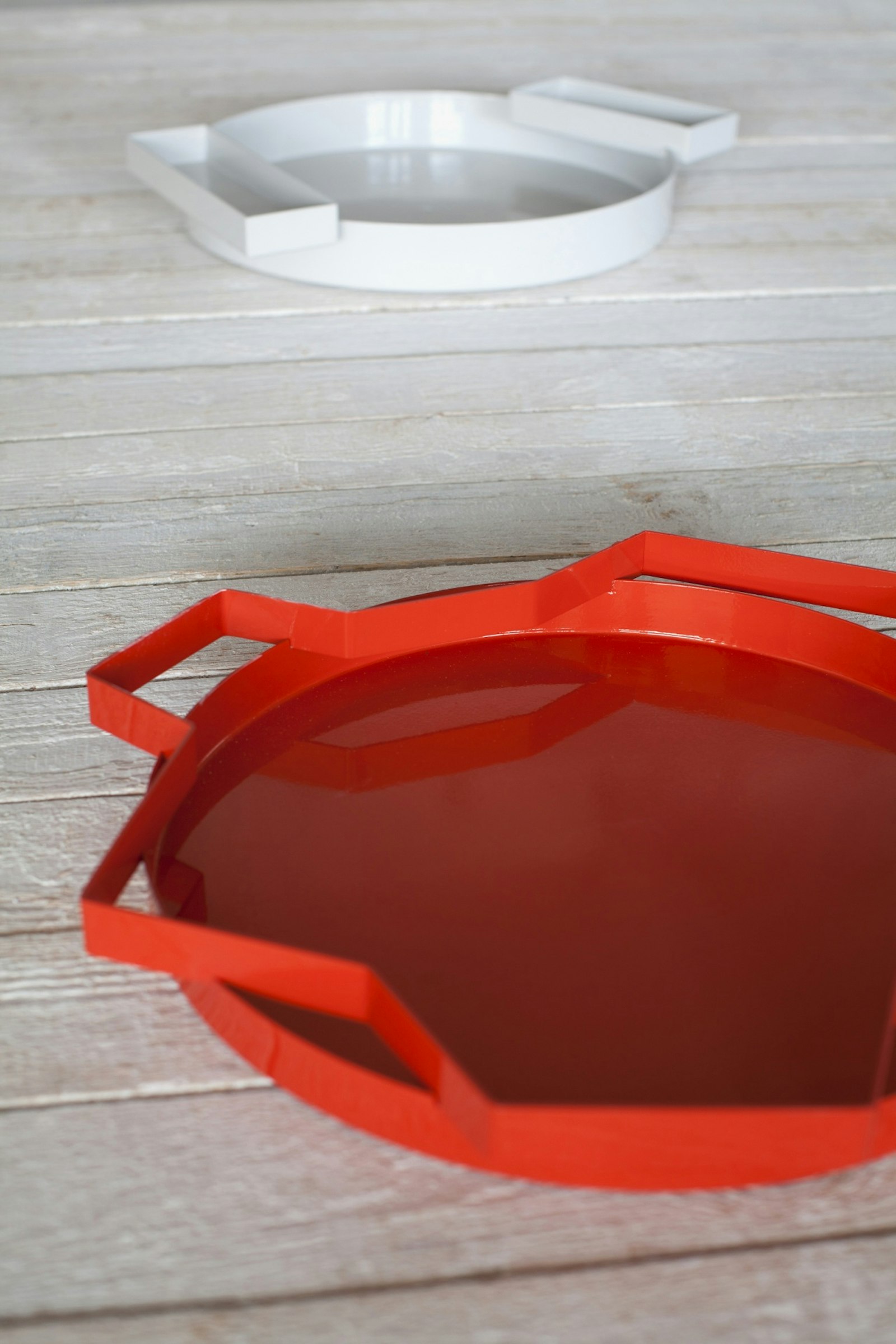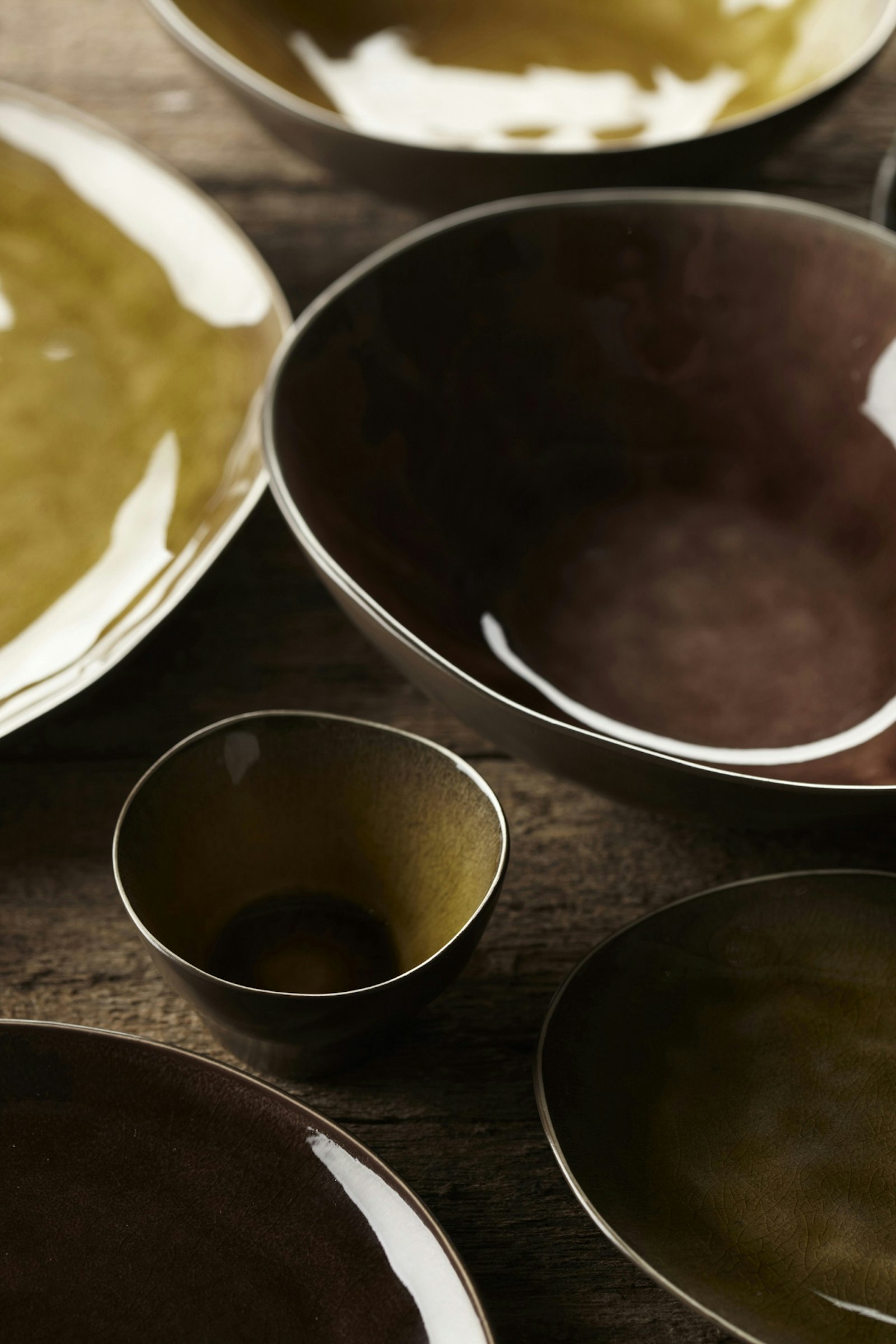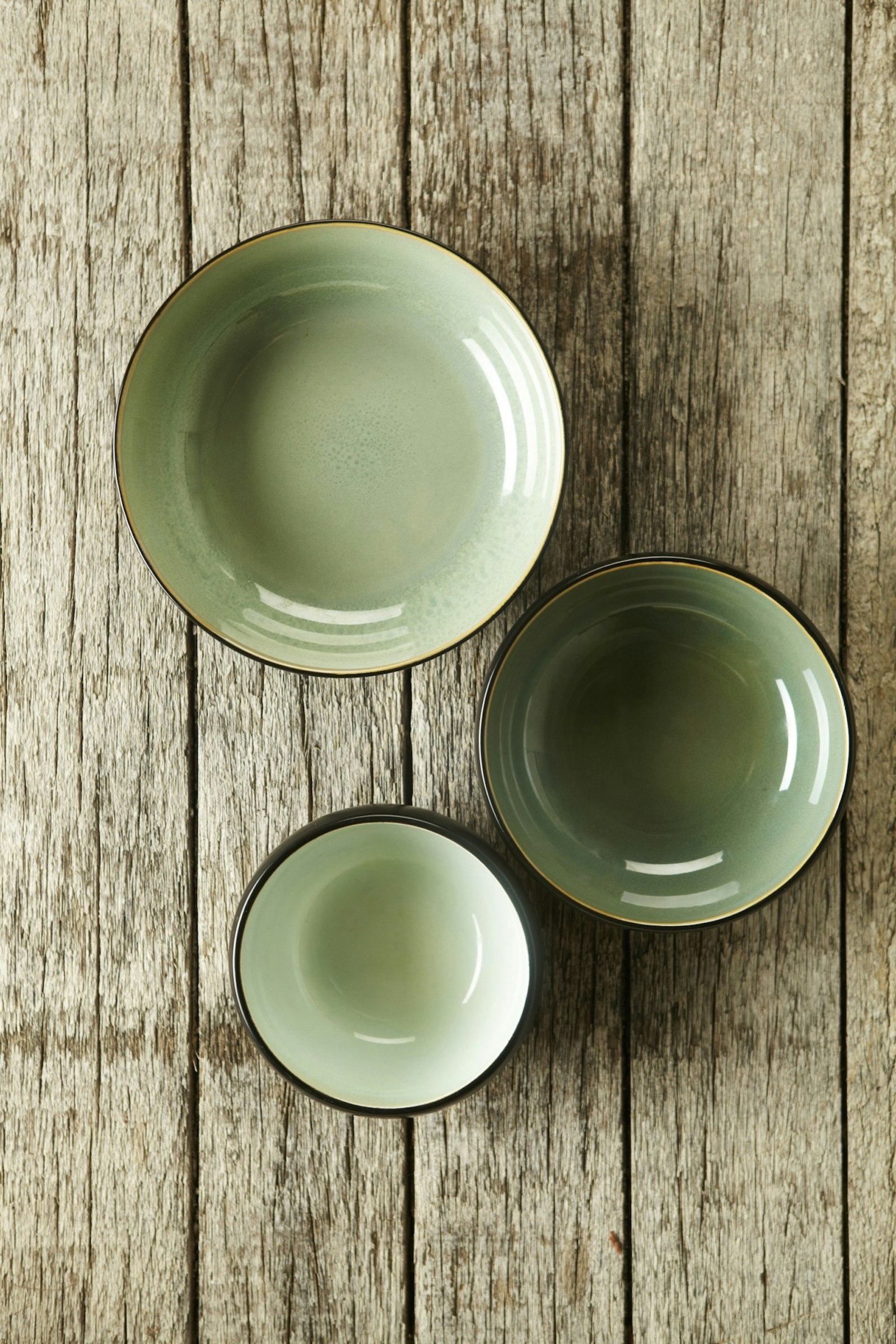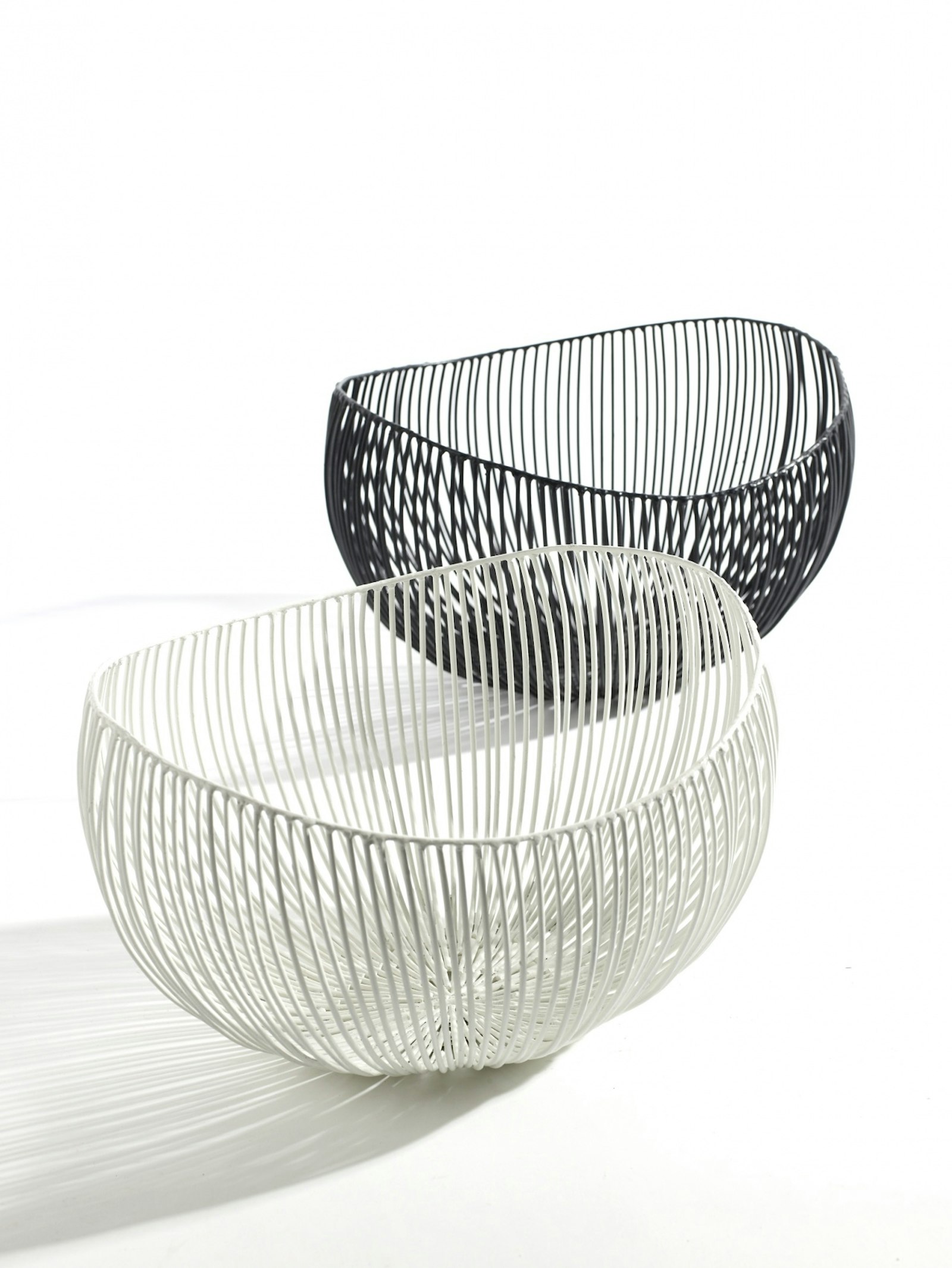de Velde
Serax
Serge and Axel. The combination of the first letters of their given names forms Serax. Under that name, the Van den Bossche brothers took over their mother’s company in 1987 and continued to work on the distribution of copper flower pots. From a garage, other types of flower pots and vases were added. Their clients? Florists and garden centres. In no time a warehouse was established, with a much larger one following just a couple of years later. Serge decided to leave the company, and since 2011 Axel and Frank Lambert have been the joint CEOs.
Steadily gaining name and fame in the decorative floral sector, they began to create more and more of their own designs and send them to their suppliers in Eastern Europe. Because more than just simply purchasing, Axel and Serge also wanted to design new objects themselves. ‘The first external designer we collaborated with was Peter Arts, a creative florist,’ Axel Van den Bossche recalls. ‘He created the ‘Amsterdammer’ dish for us. We realised already at that time that we could stand out from our competitors through our own designs. We also began collaborating with florist Moniek Vanden Berghe, and Daniël Ost who developed a stand for us, which immediately won us some awards. We started working with French designers. And with our in-house designer Marie Michielssens as well as with Jean- François D’Or from Brussels who makes glassware for us.
Having one’s own designs manufactured by industrial partners is what many labels in the interior sector do: as for example Hay or IKEA. The advantage of this way of working is that it allows the companies to respond really quickly to trends or new markets. Manufacturers and studios are, conversely, dependent on their existing machines and internal know-how. However, by keeping design in-house, these companies can develop a coherent and personalised collection.
In total, Serax works with a pool of about 30 designers from the whole of Europe. Some styles are recognisable: the steel cable collection from the Italian Antonino Sciortino, for example. Or the faceted ceramics by the Dutch Dik Scheepers or the rustic simplicity of a certain Piet Boon. From Belgium, Serax works with, among others, Pieter Stockmans, Ann Van Hoey, Roel Vandebeek, Peter Van Riet, Bram Boo, Nedda El-Asmar, Hugo Meert, Danny Venlet and Luc Vincent. And it reintroduced the vintage decorations by architect Jules Wabbes.
‘There are good designers all over the world, but they must be given a platform,’ says Axel Van den Bossche. ‘As a designer or a creator, you can sit in your studio and show your work to your family, but you have to dare to bring it out into the open. And to dare to pass it on to someone else if you want more people to see it. We’ve gained the designers’ trust now.
Roos Van de Velde was the first. For 15 years she made everything herself in her ceramics atelier. People like her, Pieter Stockmans and Ann Van Hoey know what a plate is, a bowl, a cup, a dish. A feeling for the product is really important. Frank Lambert and I recognise that immediately.’
Manufacturing the Roos Van de Velde collection in 2008 was an important step for Serax. Because from then on, in addition to floral decoration, they would be concentrating a great deal on tableware and table decoration. ‘We noticed straight away that customers want brand names on the table; this is much more important than a flower pot. A flower pot is seldom turned over, but a plate is. So you need a brand with a strong identity and solid products. The capricious, organic and perfectly imperfect ceramics from Roos Van de Velde were an immediate success. Since then we’ve continued to focus on our own personal vision of creativity. We created duos of designers and important chefs: Wout Bru and Nedda El-Asmar, Peter Goossens and Ann Van Hoey, Michel Bras and Roos Van de Velde. We sell to top restaurants and hotels throughout the entire world. In a very short period of time, the restaurant sector began to play a major role in our turnover: 40 % of our turnover is now tableware, and 70 % of that is from hotels and restaurants.’
The collection that Serax brought to the greater public was Pure, the tableware from Pascale Naessens. The characteristically coloured ceramic plates, bowls, cups and dishes from 2012 is the company’s absolute bestseller.
‘This year we had a 27 % increase in turnover. In these times of crisis, our designs make the difference. We stand out, and that’s profitable. We also choose to clearly communicate the name of each designer. In that sense, we’re a platform for design, just like, for example, Alessi. We select based on a gut feeling. We visit a lot of restaurants, hotels and concept stores; we read magazines and books and stay in the loop. We look for specialities; there’s always something just a little bit quirky about Serax products. Our products must have a face, a story, an identity. Does it fit in with our brand? Can it be reproduced? Only when the answer to those questions is yes, is it time for us to go for it. Of course working with designers is demanding: you develop a product together with the manufacturer; from sketch to prototype to production; packaging to, finally, a catalogue for each collection. We currently allow for between six months and a year to bring a product onto the market.’
And for the production, we are also always on the lookout for the best partners: ‘We collaborate with the same studios in Vietnam and China and only recently we’ve moved the production of terracotta to Portugal. And since 2014, we manufacture in Belgium as well.’
Mid 2014, Serax purchased two Belgian companies. In June 2014, the takeover of home accessories and household linnen from the Clodette brand was concluded and during Biennale Interieur 2014 they announced that the Colect brand, a collection of high-end furniture, would now be operating under the auspices of Serax. Founder Katrien Van Hulle is very satisfied with this step.‘I will continue to follow up the development, design, art direction and production, but now I can outsource the more administrative tasks to an experienced sales team. That creates space for more creativity: I can start designing again and look for exciting new partnerships.’ With Colect, Katrien Van Hulle has always emphasised Belgian products and will thus continue to work with her own atelier in Meulebeke. ‘I’m happy that, thanks to the Serax merger, more possibilities have been created abroad’, says Katrien Van Hulle.
